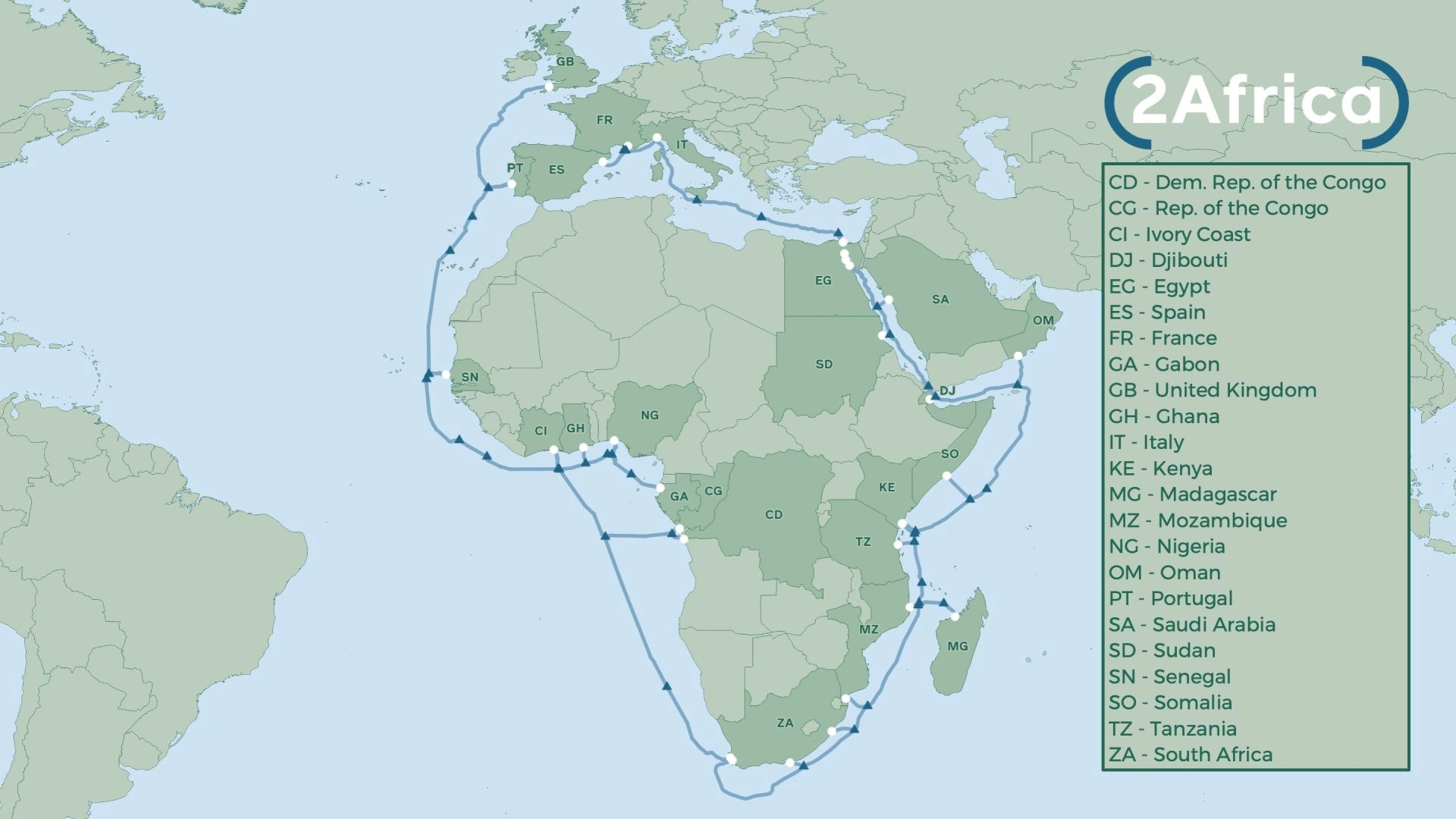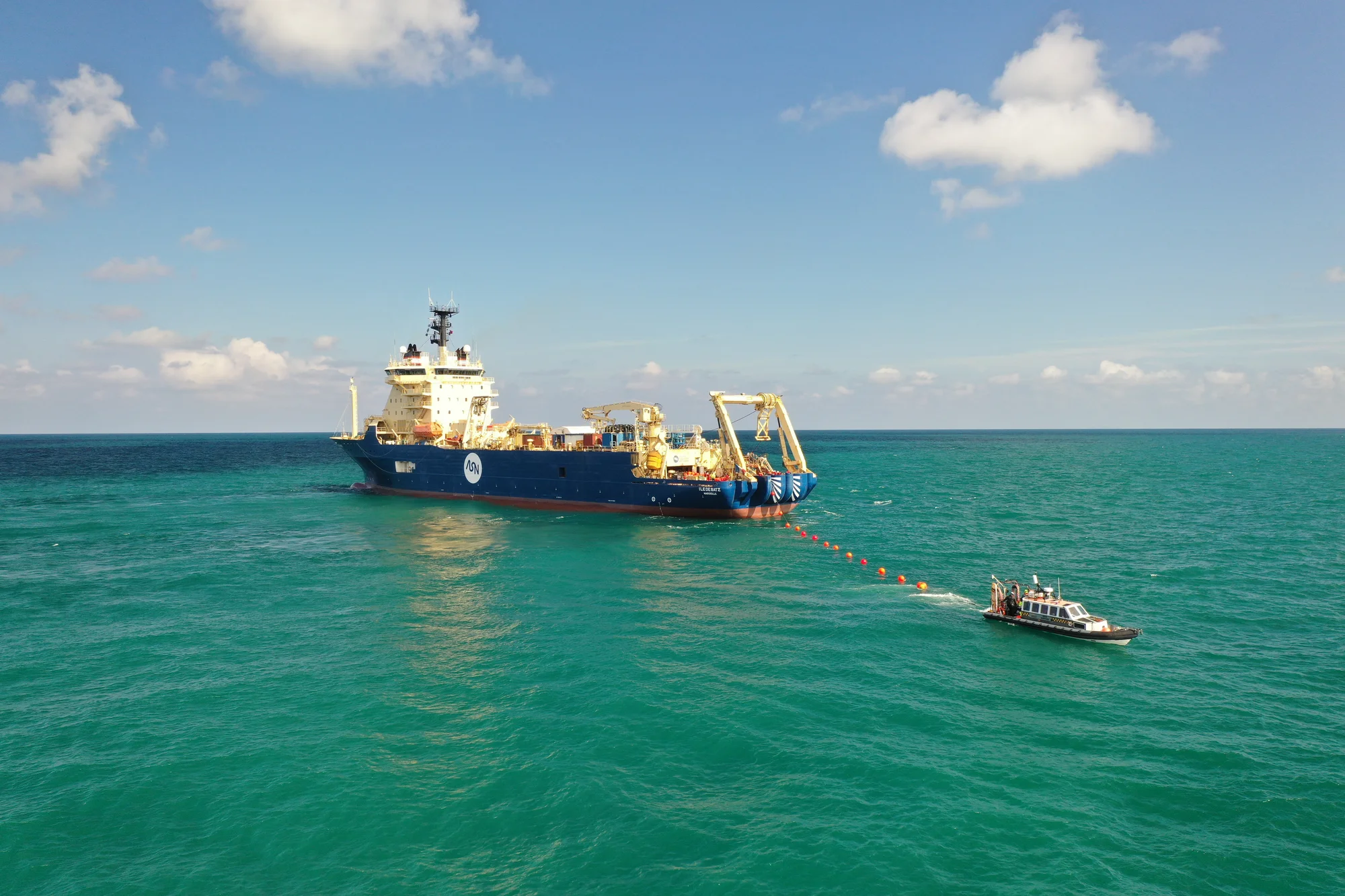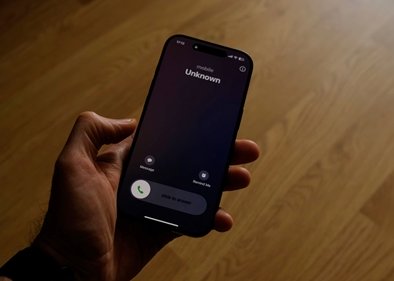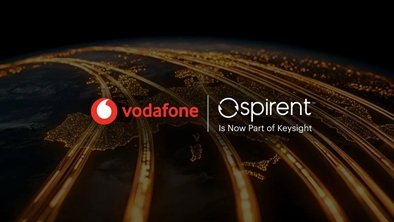Deep below the ocean’s surface, a vast network of subsea cables stretches across the globe - spanning thousands of kilometres and silently powering the digital world.
These cables are a critical part of today’s communications infrastructure, carrying more than 98% of all international data traffic. They transmit information between continents at nearly the speed of light, enabling everything from phone calls and emails to video streaming and cloud computing.
Vodafone is one of the companies at the heart of this global network, helping to build, operate, and innovate the subsea systems that help to keep everyone connected.
Why are subsea cables essential?
Subsea cables may be out of sight, but they are central to how the modern world functions. They form the invisible backbone of the global internet and are critical to national and international security due to their role in enabling financial transactions and government communications.
Beyond connectivity, subsea cables are powerful drivers of economic growth. By expanding access to high-speed internet, especially in emerging regions, they unlock new opportunities for innovation, education, jobs and inclusion.
As we move into a future shaped by immersive virtual reality, real-time AI analytics, and billions of connected devices, the demand for fast, reliable data transmission will only grow. And that data will flow through subsea cables.

The history of subsea cables
Subsea cables have been a driving force in global communication for more than 250 years. Originally dating back to the Victorian era, subsea cables were originally used for telegrams. One of the earliest examples was a cable laid in 1870 by Cable and Wireless, a company now part of Vodafone, linking Cornwall to Malta.
And during the First World War, Britain used these networks to intercept enemy communications, highlighting their strategic importance even in the early days.
As technology advanced, so did the cables. By 1956, a coaxial cable capable of transmitting signals with low interference was laid between the UK and North America, enabling longer distances for voice communication.
Then in 1988, the first fibre-optic undersea cable was laid between the US, the UK and France. To this day, fibre optic cables continue to carry international data and voice transfers across oceans and remain as important to Vodafone as they were in 1988.
The way we install subsea cables has also evolved dramatically. While the basic principles remain, modern techniques have vastly improved reliability. Back then, engineers would use plumb lines to estimate seabed depth, unable to identify if the cable would encounter rocks or wrecks. We can now be clear on where best to install the cables, using advanced sonar mapping techniques to guide where we lay them. This means we can avoid seabed hazards, reduce faults and make the maintenance much easier as we now know exactly where each cable lies.
How are our subsea cables keeping everyone connected?
Today, Vodafone has capacity on over 70 subsea cable systems across 100 countries, giving over 700 million people access to a quality connection. But our global reach is not just about scale – it's about strategic partnerships and innovation.
One of our most ambitious projects is our role in the 2Africa cable system, the largest subsea cable initiative in the world. Spanning over 45,000 kilometres, 2Africa will connect 33 countries across Europe, Africa, and Asia, dramatically increasing the capacity, quality, and availability of internet connectivity between Africa and the rest of the world. We’re part of a consortium of eight companies funding the cable.

Most of the system is now installed and is currently carrying traffic across the Mediterranean as well as along Africa’s eastern coastline between Djibouti and South Africa. Soon, the western segment of the system will be live as well, carrying traffic from South Africa back to the UK, with connections to west African countries as well as Europe.
Vodafone is responsible for 11 of the 2Africa cables landings, more than any other owner, including key sites in the UK, Portugal, and South Africa.
A key figure in the evolution of 2Africa is Rick Perry, who began his career at Cable & Wireless and trained at the company’s engineering college in Porthcurno, Cornwall, now the PK Porthcurno Museum of Global Communications. He continues to lead our subsea strategy and has even had the Vodafone part of the cable named after him (SHARP – System Honouring the Achievements of Rick Perry). This recognises the huge role he played in bringing this project, and many other cable projects, to life.
Another key project for Vodafone is the recent connection to the IEX Cable in Tympaki Greece. This cable is nearly 10,000 kilometres long and links Crete to a high-capacity route between Europe and Asia, enhancing bandwidth and resilience for the region. Our new Cable Landing Station in Tympaki is the only one on Crete’s southern coast - opening a vital new gateway for faster, more reliable connectivity for local communities and businesses.
Vodafone has also partnered with Aqua Comms, Meta, and Microsoft on the Amitié cable. This is the first to directly connect Boston to Bordeaux, with a branch landing in Cornwall at Vodafone’s Cable Landing Station. This 6,700-kilometre transatlantic route increases the reliability and diversity of data flowing between North America and Europe. It features 16 fibre pairs and delivers a total capacity of 400 terabits per second (enough to stream millions of HD videos simultaneously), making it the highest capacity transoceanic communications cable ever deployed.
Together, these projects reflect Vodafone’s long-standing commitment to building a more connected, resilient, and inclusive digital world - one cable at a time.
As demand for faster, more reliable connectivity continues to grow, our subsea cables remain an essential part of the network infrastructure powering our digital lives and helping to get everyone connected. From the first telegraph lines to today’s high-speed data highways, the subsea story is far from over.
Want to know more?
-
Learn more about the history of subsea cables and their importance to today’s international data traffic in our subsea cable explainer video.
-
Read more about our Open letter to European, UK and NATO decision makers on subsea cables.
-
Find out more about discussions around subsea cables at the EPC Roundtable event.
-
Visit our subsea cables page for more information and news.

























